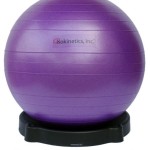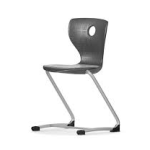In the last issue, I wrote about why some children have a difficult time sitting at circle time and described a variety of tools to help those students. In this longer issue, I will talk about dynamic seating or standing tools for students or adults. I make reference to various products throughout my newsletters. This is not an endorsement of those products or companies but are intended as examples for the idea I am discussing.
Brainwaves is a monthly newsletter designed to create some “brainwaves” within my community of colleagues, friends and clients.
Why do some of us need to move while listening or focusing?
Brain research is telling us that moving while thinking is the best way to learn! For some children (and adults), this is a necessity, not an option and stopping them from moving actually stops them from thinking!
There are some children who are okay with fidgeting in small ways with their hands, and others who need to move in larger ways with their whole body. Some have poor core strength and may find that the momentum of moving their body helps them to maintain an upright posture. Sitting still is too hard for their muscles! Still others seem to need movement to maintain a state of active alertness. Let’s talk about some ways to integrate dynamic seating and work spaces into your classroom (or offices!) to help everyone. Remember that the best classroom or office has a v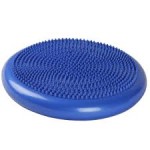 ariety of working options. We are not “one size fits all”!
ariety of working options. We are not “one size fits all”!
Modifying ordinary classroom (or office) chairs
Some people only need to move a little bit! They might just need an air filled cushion on their chair seat to allow some wiggle movement. Some students need to fidget with their feet while sitting at their desk. They might benefit from a foot fidget. A cheaper alternative is to place theraband across the front chair legs BUT be careful with this tool as some children will put their feet behind the theraband and then trip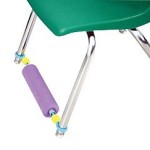 and fall when they need to stand up.
and fall when they need to stand up.
Standing Desks
I often see students who prefer to stand at their desk while working instead of sitting. Many adults enjoy this type of change while working. For younger students, you can set up a counter as an additional work space where they can stand and still have an upright posture (working 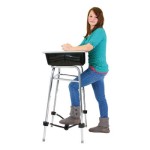 surfaces should be about 2 inches above the bent elbow). For taller students or adults, you will need a higher surface such as a standing desk. Some teachers put 4 standing desks together to create a group work space for several students. A food fidget can also be placed underneath a standing desk (or underneath a sitting desk).
surfaces should be about 2 inches above the bent elbow). For taller students or adults, you will need a higher surface such as a standing desk. Some teachers put 4 standing desks together to create a group work space for several students. A food fidget can also be placed underneath a standing desk (or underneath a sitting desk).
Moving Work Stations
Another variation to the “standing desk” is the use of work surfaces on treadmills or exercise bikes. When using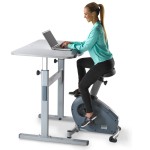 these types of work stations, it is important to consider the kind of work being expected and the students’ abilities. If work requires a strong ability to focus eyes ie) typing a document or reading, this may be difficult for some students (as a result of an unintegrated visual ocular reflex). These individuals may get a headache or feel dizzy. However, they may be okay with listening to audio information while they work and move.
these types of work stations, it is important to consider the kind of work being expected and the students’ abilities. If work requires a strong ability to focus eyes ie) typing a document or reading, this may be difficult for some students (as a result of an unintegrated visual ocular reflex). These individuals may get a headache or feel dizzy. However, they may be okay with listening to audio information while they work and move.
Ball chairs have become popular for exercising and seating. They allow for variable movement, particularly vertical up and down movement. Classrooms need to have firm rules as well as ball bases to stop the balls from rolling. Ball chairs can work on developing core strength, however, students with poor core will tire and sink into the ball with a C shaped 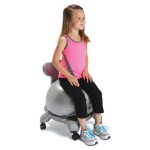 posture after awhile. They will need another chair with a backrest to sit in or stands for ball chairs that have a back rest. It is hard work to sit on a ball chair for long if your core is weak!
posture after awhile. They will need another chair with a backrest to sit in or stands for ball chairs that have a back rest. It is hard work to sit on a ball chair for long if your core is weak!
“Wobbly” Stools
“Wobbly” stools may be useful for individuals who seem to need to move a lot in their seat. The hokki® stool, is an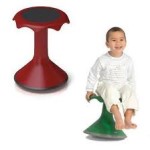 example, and is found in all sizes, from kindergarten size to lab desk height. These stools can also work on core strengthening but students need to have a reasonable sense of balance so they won’t fall off the stool. Because it moves in all directions, it provides arrhythmic movement which can be alerting for “low” arousal students. But beware that those are also the students who do not quickly register their movement and may fall off! Teachers also like these stools for sitting at larger desks and working with several students as they find that it keeps their back moving.
example, and is found in all sizes, from kindergarten size to lab desk height. These stools can also work on core strengthening but students need to have a reasonable sense of balance so they won’t fall off the stool. Because it moves in all directions, it provides arrhythmic movement which can be alerting for “low” arousal students. But beware that those are also the students who do not quickly register their movement and may fall off! Teachers also like these stools for sitting at larger desks and working with several students as they find that it keeps their back moving.
Rocking Chairs (variety of types)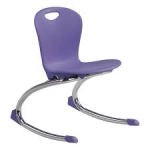
Rocking chairs provide linear, rhythmic, forward and backward motion for individuals who may find the movement soothing or regulating. These might be the same students who crave swinging in the playground. Because it is actually a chair, it is useful for students who have low core strength and need a back rest.
There are many variety of these chairs. The Panto Swing® chair is stated to be ergonomically designed for appropriate posture and also provides a little bit of forward flexion movement. It also comes in a variety of sizes.
Chairs that move “a lot”
An example is the Panto Move® which offers a swivel seat, roller wheels, front/back movement, side to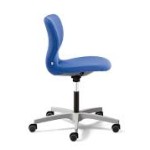 side movement, and can also be height adjusted! Some students enjoy this chair because they can sit in it backwards and lean forward at their desk, receiving some deep pressure touch. It might be ideal for an office environment too!
side movement, and can also be height adjusted! Some students enjoy this chair because they can sit in it backwards and lean forward at their desk, receiving some deep pressure touch. It might be ideal for an office environment too!
Ergonomic Chairs
These types of chairs are ideal for students who need a great deal of support to establish a good sitting posture. These are students with poor 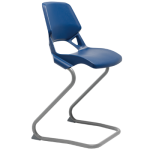 core strength and are often seen to be slouching or leaning on their desk.
core strength and are often seen to be slouching or leaning on their desk.
![]() “Winnipeg Occupational Therapist Discoveries in Therapy”
“Winnipeg Occupational Therapist Discoveries in Therapy”
“Rosanne’s Therapy”

